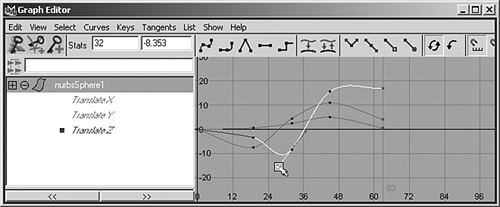Differences in Previewing and Rendering
| Rendering: In Maya, click the director's clapboard icon to render the currently active panel. You can pan and zoom in the rendering panel just as in any other panel. Rendering settings: All the adjustments for rendering are handled in the Render Global Settings window. To open it, click the button to the right of the IPR button or choose Window | Rendering Editors | Render Globals on the menu. Rendering options: Maya now offers four different built-in renderers: Software, Hardware, Vector, and Mental Ray. The Vector and Mental Ray renderers are new to Maya, and similar functionality is currently available to max only through third-party plug-ins. The Vector renderer is particularly useful for rendering Flash movies for web content. Mental Ray is a powerful raytrace renderer that offers a host of advanced rendering functions, including global illumination, caustics, subsurface scattering, and complex motion blur. max's Light Tracer can perform some of Mental Ray's Final Gather functions. Maya has no analog to max's Radiosity renderer (a vertex-baked light solution with analytic tessellation). However, you can bake lighting into textures and vertices. Antialiasing: Maya uses a renderer quite differently from the one in max. Antialiasing settings for the Maya Software and Mental Ray renderers appear in the Render Global Settings window, with five Maya and nine Mental Ray quality presets for quick adjustment. Unlike max's on/off approach to antialiasing, you have to choose a quality level in Maya. Raytracing: Every Maya material is capable of inherent raytraced reflections via the Reflectivity attribute of most shader types. However, Maya's raytracer for the Maya Software renderer is off by default. You must enable it to render raytraced shadows or reflection/refraction. For the Mental Ray renderer, raytracing is on by default. Network rendering: Maya will network render on an unlimited number of slave machines for any Maya license that includes currently paid-for "maintenance." However, you must use a third-party product, such as Lemon, Muster, or Smedge, to control network rendering, as with max's Queue Manager. Render layers: Maya enables you to render separate passes for Renderable, Beauty, Color, Shadow, Diffuse, and Specular attributes. These rendering passes can be saved to separate directories in the chosen image file format. Maya can also render depth and alpha channels during rendering. There is no option for combining all these layers into an RPF file. Maya calls this method of rendering layers open compositing, meaning you can use any compositor you want; compositing isn't oriented to any one product. Active Shade: max 4 added Active Shade, which enables you to edit lighting and materials and get quick feedback. This feature was first seen in TDI software, a company absorbed by Wavefront before Maya was even on the horizon. In Maya, it's called Interactive Photorealistic Renderer (IPR). Maya's IPR has an additional step: After IPR rendering is finished, you must drag a box in the rendered view to set a rectangular area for updating. Like max, only materials and lighting changes are updated. By focusing on an area smaller than the full frame, you get faster feedback. You can MMB-click and drag and drop materials from Hypershade onto an object in an IPR window to assign them and see results in real time. Previewing: In max, you can get a quick preview of your animation that uses the video card's display mode for creating an AVI file (Rendering | Make Preview on the menu). Maya offers similar functionality with Playblast, which appears under Window | Playblast. Track View: Maya offers similar functionality as max: The Graph Editor in Maya (see Figure A.24) is similar to max's Track View, and both products have a Dope Sheet Editor. Unlike max's approach, in which every scene element is shown and you then filter objects out, in Maya, you see only the currently selected object by default. Saved settings known as bookmarks are available to bring back your needed selection sets for either editor. These bookmarks are available in most Maya windows that display attributes of selected objects. Figure A.24. Maya's Graph Editor is used to tweak animation curves.
Schematic View: This max feature has an almost identical analog in Maya's Hypergraph. You can make more extensive use of Hypergraph because you can make all manner of "connections." For example, parts of materials could be broken off or reassigned, and object creation elements can be similarly reassigned. The right-click option is a major part of Maya's Hypergraph. |
EAN: 2147483647
Pages: 198
